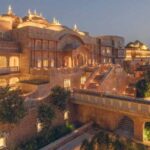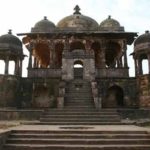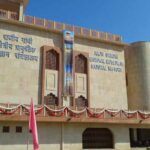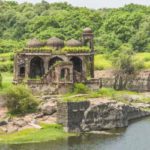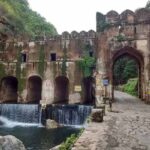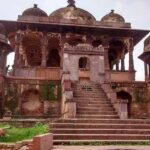Sawai Madhopur Tourism, a vibrant city in Rajasthan, India, is best known as the gateway to Ranthambore National Park, a top destination for wildlife enthusiasts and photographers eager to spot the elusive Royal Bengal tiger in its natural habitat. Established by Maharaja Sawai Madho Singh in 1763, the city boasts a rich cultural heritage, evident in its historic architecture and local traditions.
The Ranthambore Fort, a UNESCO World Heritage Site perched atop a hill, dominates the landscape with its majestic presence. This 10th-century fort is surrounded by verdant forests and is an intriguing site for history buffs, with its ancient temples, tanks, and palaces that echo tales of its glorious past Ranthambore Tour Packages.
Apart from its wildlife and historical significance, Sawai Madhopur is famous for its exclusive hand-painted Rajasthani crafts like toys, ethnic fabrics, and exquisite carpets. The town’s colorful bazaars, where these crafts are sold, offer a peek into the local lifestyle and provide visitors with unique souvenirs.
Visiting Sawai Madhopur during the annual Dastkar Nature Bazaar, which celebrates rural handicrafts and arts, adds an extra layer of cultural experience, making it a must-visit for anyone traveling to Rajasthan.
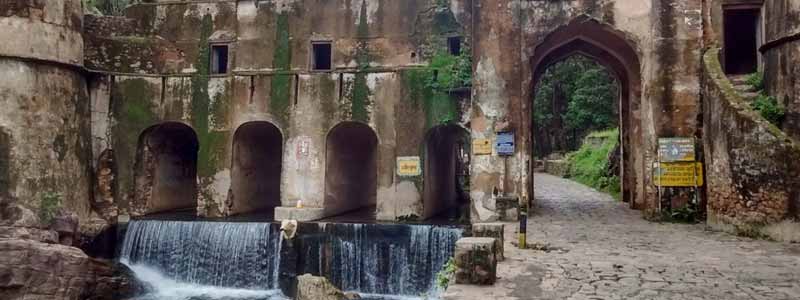
History of Sawai Madhopur Tourism
Sawai Madhopur, a city in the eastern part of Rajasthan, India, is steeped in history and natural beauty. Founded in 1763 by Maharaja Sawai Madho Singh I of Jaipur, the city owes its name and establishment to this ruler. It was strategically located and served as a buffer against invasions from neighboring regions.
The historical centerpiece of Sawai Madhopur is the Ranthambore Fort, which is situated in the nearby Ranthambore National Park. This fort has a rich history that predates the founding of the city itself, dating back to the 10th century. It was a pivotal fortress in the region and has witnessed many battles and changed hands multiple times through the centuries. The fort is said to have been a stronghold for the Chauhan Rajput kings and later became an important part of the Mughal empire.
Over time, the fort’s strategic importance declined, especially after the Mughal empire weakened. The area around the fort gradually became overgrown and wild, setting the stage for its transition into one of India’s premier wildlife sanctuaries post-Indian independence.
The development of Ranthambore National Park in the 20th century marked a new chapter for Sawai Madhopur. It became renowned for its efforts in the conservation of the Royal Bengal tiger and attracted tourists from around the globe interested in wildlife and nature.
Today, Sawai Madhopur is not only famous for its historical and natural heritage but also for its vibrant culture that includes local festivals like the Ganesh Chaturthi fair held at the Ranthambore Fort. The city’s economy thrives on tourism, with visitors drawn to its wildlife sanctuary, historical sites, and a taste of Rajasthani culture. This blend of history, nature, and culture makes Sawai Madhopur Tourism a unique and fascinating destination within Rajasthan.
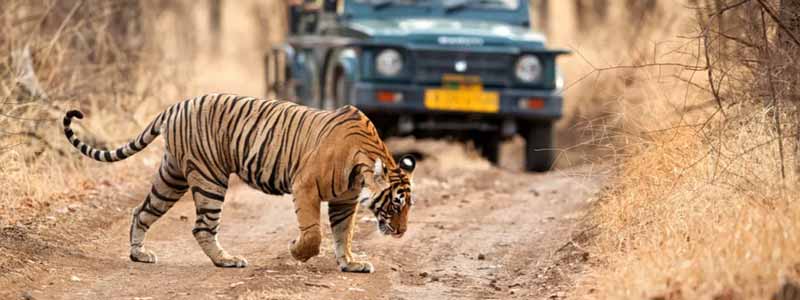
Best Places To Visit In Sawai Madhopur
Sawai Madhopur, primarily known for its proximity to Ranthambore National Park, offers a compelling blend of wildlife, history, and culture. Here are some of the best places to visit in and around Sawai Madhopur:
Ranthambore National Park – Expansive Biodiversity
Ranthambore National Park, located in the Sawai Madhopur district of Rajasthan, India, is one of the largest and most renowned national parks in Northern India. Covering an area of approximately 392 square km, Ranthambore is celebrated for its rich wildlife and is one of the best locations in the world to witness majestic Royal Bengal tigers in their natural habitat. The park was originally a hunting ground for the maharajas of Jaipur before being declared a wildlife sanctuary in 1955 and gaining the protection of “Project Tiger” in 1973.
The landscape of Ranthambore is characterized by dense tropical dry forest, open bushland, rocky terrain, steep cliffs, and lush green meadows. The varied geography of the park supports a diverse array of fauna besides the tiger, including leopards, hyenas, sloth bears, wild boars, and a variety of deer and antelope species. The park is also home to a wide range of birds, with approximately 270 different species documented.
A key historical feature within the park is the Ranthambore Fort, which stands majestically atop a hill in the center of the forest. This fort is a UNESCO World Heritage Site, adding a layer of cultural history to the natural environment. It offers panoramic views of the park and is an important site for pilgrimages in the region Sawai Madhopur Tourism.
Safari tours in Ranthambore are a major attraction, offering visitors the opportunity to explore the rich flora and fauna via jeep or canter rides. These safaris are conducted in two shifts—morning and afternoon—and are highly sought after by wildlife photographers and nature enthusiasts from across the globe.
Ranthambore’s blend of historical significance and natural beauty makes it a unique wildlife destination, promising an unforgettable experience of India’s wildlife and historical heritage.
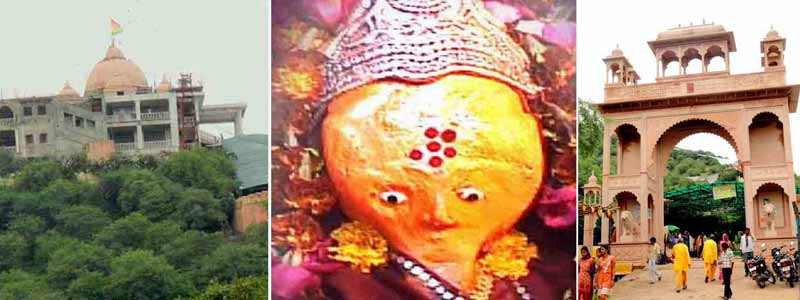
Chauth Mata Temple – Temple At The Hill Top
Chauth Mata Temple, located near Sawai Madhopur in Rajasthan, India, stands as a revered site of worship and a significant cultural landmark. The temple is dedicated to Chauth Mata, a form of the goddess Parvati, and is a prime religious destination for locals and visitors alike. Nestled on a hilltop, reaching the temple involves climbing a series of steps, which pilgrims often undertake as a sign of devotion and to seek blessings.
According to local legend, the temple was established by Maharaja Bhim Singh of Sawai Madhopur Tourism in the 14th century. The story goes that the king, on a hunting expedition, received a divine command in his dream to install the idol of Chauth Mata on the hill where the temple currently stands. Complying with this, the king brought the idol from Pachala, his birthplace, to its current location, thereby founding the temple.
The journey to the temple is not only a spiritual quest but also offers panoramic views of the surrounding landscape, including lush valleys and the plains extending towards Ranthambore National Park. The architecture of Chauth Mata Temple is typical of Rajasthani style, featuring intricate carvings and a serene ambiance.
Chauth Mata Temple is particularly vibrant during festivals, especially during Chauth Mata Mela, attracting devotees from all over the region. The temple not only serves as a place of worship but also as a beacon of local culture and history, embodying the spiritual heart of the region. Visitors leave with a sense of peace and fulfillment, making it a must-visit for those exploring the spiritual landscape of Rajasthan.

Ranthambore Fort – A Heritage Place
Ranthambore Fort, a formidable historical site located within the Ranthambore National Park in Rajasthan, India, stands majestically atop a hill offering sweeping views of the surrounding forest and wildlife. This UNESCO World Heritage Site is steeped in the rich tapestry of Indian history, dating back to the 10th century. Originally built by the Chauhan Rajput kings, the fort has witnessed numerous battles and has changed hands between various empires, including the Delhi Sultanate and the Mughal Empire.
Covering nearly 7 kilometers in circumference, Ranthambore Fort is an architectural marvel, featuring massive walls, gates, and bastions constructed from the rugged local stone. The fort complex includes several notable structures such as the Trinetra Ganesh Temple, which is unique as it is one of the few places in the world where Lord Ganesh is depicted with three eyes. This temple remains an active site of worship and attracts thousands of pilgrims, especially during the Ganesh Chaturthi festival.
Other significant remnants within the fort include palaces, cenotaphs, and a collection of step-wells, which were crucial for the conservation of water, a precious resource in the arid landscapes of Rajasthan. The site also contains several mosques and temples, illustrating the diverse cultural and religious heritage that has coexisted in the region over centuries Sawai Madhopur Tourism.
Visiting Ranthambore Fort not only offers a journey through India’s vibrant history but also provides visitors with the chance to experience breathtaking natural beauty and possibly sight wildlife, as the national park below is one of the best places in India to see wild tigers. The fort’s elevation offers panoramic views of the jungle and the occasional glimpse of wildlife, making it a favorite spot for both history buffs and nature enthusiasts.
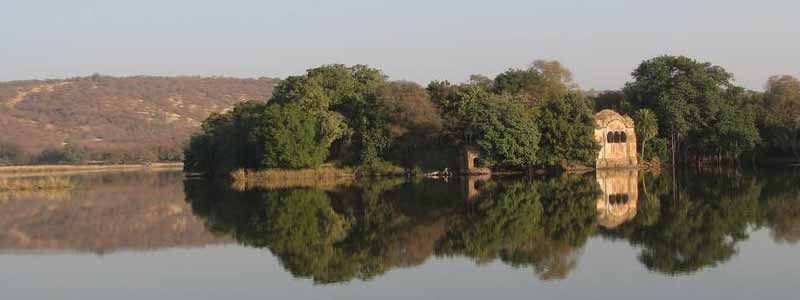
Surwal Lake – A Paradise For Ornithologists
Surwal Lake, nestled amidst the picturesque landscapes of Ranthambore National Park in Sawai Madhopur, Rajasthan, is a serene oasis that offers respite from the hustle and bustle of city life. Spread over an area of approximately 5 square kilometers, Surwal Lake is a haven for birdwatchers and nature enthusiasts, boasting a rich diversity of avian species and scenic beauty.
One of the most enchanting features of Surwal Lake is its role as a crucial habitat for migratory birds during the winter months. Birdwatchers flock to the lake to catch glimpses of rare and exotic species such as painted storks, black-necked storks, spoonbills, and various species of ducks and geese. The tranquil surroundings and the melodious chirping of birds create a mesmerizing ambiance that enchants visitors.
Apart from its avian inhabitants, Surwal Lake is also home to a variety of wildlife, including sambar deer, nilgai, and occasional sightings of leopards and sloth bears. Visitors can embark on guided nature walks or jeep safaris around the lake to explore its rich biodiversity and capture stunning views of the surrounding landscape Sawai Madhopur Tourism.
The scenic beauty of Surwal Lake is further accentuated by its lush greenery and the reflection of the clear blue sky in its calm waters. The lake serves as an ideal spot for photography enthusiasts seeking to capture the vibrant hues of sunrise and sunset against the backdrop of the tranquil water body.
For those seeking a tranquil retreat amidst nature’s splendor, Surwal Lake in Ranthambore National Park is a hidden gem waiting to be explored, offering an unforgettable experience of peace, serenity, and natural beauty.
Chamatkar Temple – Abode For Wish Fulfillment
The Chamatkar Temple, located in the picturesque Ranthambore National Park near Sawai Madhopur, Rajasthan, is a sacred site with a unique legend attached to it. “Chamatkar” translates to “miracle,” and the temple is believed to be associated with miraculous occurrences.
The temple is dedicated to Lord Ganesha, the revered elephant-headed deity in Hinduism, known as the remover of obstacles and the god of beginnings. It is situated atop a small hill within the boundaries of the national park, surrounded by lush greenery and offering panoramic views of the surrounding landscape.
What sets the Chamatkar Temple apart is the belief among locals and visitors that prayers offered here have the power to fulfill wishes and bring about miracles. Devotees from far and wide flock to the temple to seek blessings and offer prayers for various desires and aspirations.
The journey to the temple involves a short trek through the forest, adding an adventurous element to the spiritual experience. As visitors ascend the hill, they are greeted by the soothing sounds of nature and the occasional sight of wildlife, such as langurs, deer, and various bird species.
The temple itself is modest in size, featuring traditional Rajasthani architecture and adorned with colorful paintings and sculptures depicting Lord Ganesha. The serene atmosphere and tranquil surroundings make it an ideal place for meditation and introspection Sawai Madhopur Tourism.
Visiting the Chamatkar Temple offers not only a chance to connect with divinity but also an opportunity to immerse oneself in the natural beauty and spirituality of Ranthambore National Park. It is a place where faith, nature, and the mystical converge, leaving visitors with a sense of awe and wonder.
Kachida Valley – The Spectacular Green Meadow
Kachida Valley is a hidden gem within the expansive wilderness of Ranthambore National Park, located in Sawai Madhopur, Rajasthan, India. This picturesque valley is renowned for its diverse flora and fauna, offering visitors a unique safari experience.
Nestled amidst rugged terrain, Kachida Valley provides a habitat for a variety of wildlife species, including the majestic Royal Bengal tiger, leopards, sloth bears, deer, and a plethora of bird species. The valley’s dense vegetation, consisting of dry deciduous forests and rocky outcrops, creates an ideal environment for these animals to thrive.
What sets Kachida Valley apart is its tranquil atmosphere and the opportunity it presents for intimate wildlife encounters. Unlike some of the more frequented zones in Ranthambore National Park, Kachida Valley offers a quieter and less crowded safari experience, allowing visitors to immerse themselves fully in the natural beauty of the surroundings.
As you traverse the rugged paths of Kachida Valley on a safari excursion, keep your eyes peeled for sightings of elusive predators like tigers and leopards stealthily moving through the undergrowth. The valley’s varied terrain, with its rocky escarpments and narrow gorges, adds an element of adventure to the safari, promising surprises at every turn Sawai Madhopur Tourism.
Aside from wildlife viewing, Kachida Valley also provides breathtaking vistas of the surrounding landscape, especially during sunrise and sunset. The play of light and shadow on the rugged terrain creates a mesmerizing spectacle that is a delight for photographers and nature enthusiasts alike.
For those seeking an off-the-beaten-path experience and a chance to connect with nature in its purest form, a visit to Kachida Valley in Ranthambore National Park is an absolute must. It offers a rare opportunity to witness the untamed beauty of Rajasthan’s wilderness and create unforgettable memories amidst the splendor of the natural world.
Khandar Fort – The Relics Of Mewar Reign
Khandar Fort, also known as the Khandar Durg or the Khandar Quila, is a historic fort located near Ranthambore National Park in the Sawai Madhopur district of Rajasthan, India. Situated atop a steep hill, the fort offers panoramic views of the surrounding landscape, including the nearby Ranthambore forests.
This ancient fort holds significant historical importance, with its origins dating back to the 12th century. It was initially built by the Nagil Jats and later came under the control of various rulers, including the Chauhans, Mughals, and Rajputs. The fort played a strategic role in protecting the region and served as a stronghold for its rulers.
Khandar Fort is renowned for its architectural marvels, including its sturdy walls, majestic gateways, and intricately designed temples and palaces. The fort’s imposing structure and strategic location atop a hill make it a fascinating destination for history enthusiasts and architecture buffs alike.
Exploring the fort offers visitors a glimpse into Rajasthan’s rich cultural and historical heritage. One of the highlights of a visit to Khandar Fort is the opportunity to witness the remnants of its past glory, such as the Rani Mahal (Queen’s Palace), the Shiva Temple, and various other structures scattered throughout the complex.
In addition to its historical significance, Khandar Fort also boasts breathtaking natural beauty, with lush greenery surrounding the hill on which it stands. The tranquil atmosphere and stunning vistas make it an ideal spot for photography and relaxation Sawai Madhopur Tourism.
Visitors to Ranthambore National Park often include a visit to Khandar Fort in their itinerary, as it offers a captivating contrast to the wildlife-centric experiences in the area. Whether you’re a history buff, nature enthusiast, or simply seeking adventure, Khandar Fort promises an unforgettable experience amidst the timeless charm of Rajasthan’s heritage.
Trinetra Ganesh Temple – A Unique Temple Of Lord Ganesha
The Trinetra Ganesh Temple in Ranthambore holds a significant place in the hearts of both locals and visitors alike, not just as a religious site but also as a symbol of faith and devotion. Situated within the premises of the renowned Ranthambore Fort, this temple is dedicated to Lord Ganesha, the Hindu deity known as the remover of obstacles.
The temple’s name, “Trinetra,” translates to “three-eyed,” symbolizing Lord Ganesha’s omniscience. Legend has it that before embarking on any expedition or hunting trip, the erstwhile rulers of the region would seek the blessings of Lord Ganesha at this temple. It is believed that seeking his blessings ensured success and protection during their endeavors.
The architecture of the Trinetra Ganesh Temple reflects a blend of Hindu and Rajput styles, characterized by intricate carvings, vibrant colors, and sacred motifs. The idol of Lord Ganesha enshrined within the temple is depicted with three eyes and adorned with traditional offerings such as flowers, sweets, and incense Sawai Madhopur Tourism.
One of the most fascinating aspects of this temple is its unique offering tradition. Devotees offer prayers and present Lord Ganesha with specially crafted ladoos (sweet treats). It is customary for devotees to express gratitude by offering a ladoo before making a wish and then offering another ladoo once their wish is fulfilled.
Aside from its religious significance, the Trinetra Ganesh Temple offers breathtaking panoramic views of the surrounding landscape, including the rugged terrain of Ranthambore National Park and the Aravalli Hills. Visitors can also explore the historic Ranthambore Fort complex, which houses several other temples, reservoirs, and ancient structures, adding to the allure of this revered site.
Amareshwar Mahadev Temple – Majestic Temple
The Amareshwar Mahadev Temple is a significant religious site located within the premises of the Ranthambore National Park in Sawai Madhopur Tourism, Rajasthan, India. This ancient temple holds immense spiritual and historical significance, attracting devotees and tourists alike.
Dedicated to Lord Shiva, the temple is nestled amidst the lush greenery and rugged terrain of the national park, providing a serene and tranquil atmosphere for worship and contemplation. It is believed to have been constructed several centuries ago, adding to its aura of antiquity and reverence.
The temple’s architecture reflects traditional Rajasthani style, with intricately carved pillars, ornate ceilings, and exquisite sculptures depicting various mythological motifs. Visitors are captivated by the temple’s architectural beauty and the peaceful ambiance that pervades the surroundings.
One of the most noteworthy features of the Amareshwar Mahadev Temple is the sacred Shiva Lingam enshrined within its sanctum sanctorum. Devotees offer prayers and perform rituals to seek blessings for prosperity, happiness, and spiritual fulfillment.
Apart from its religious significance, the temple also holds cultural importance, especially during festivals like Mahashivratri, when devotees gather in large numbers to celebrate and seek the blessings of Lord Shiva.
Visiting the Amareshwar Mahadev Temple offers not only a spiritual retreat but also an opportunity to immerse oneself in the natural beauty of Ranthambore National Park. The temple’s serene surroundings and scenic vistas make it a must-visit destination for those exploring the wildlife and cultural heritage of Sawai Madhopur.
Shilpgram – The Craft Village
Shilpgram Ranthambore is a cultural complex located near Ranthambore National Park in Sawai Madhopur, Rajasthan, India. This sprawling area serves as a hub for showcasing traditional Rajasthani art, craft, and culture, providing visitors with an immersive experience into the region’s rich heritage.
Spread across several acres of land, Shilpgram Ranthambore is designed as a model village, comprising artisan workshops, exhibition spaces, performance arenas, and retail outlets. It serves as a platform for local artisans and craftsmen to display their skills and sell their handmade products, ranging from intricately designed textiles and pottery to exquisite jewelry and wooden artifacts Sawai Madhopur Tourism.
Visitors to Shilpgram can witness live demonstrations of traditional crafts such as block printing, pottery-making, puppetry, and tie-dyeing, allowing them to interact with artisans and gain insights into the meticulous processes involved in creating these masterpieces.
The complex also hosts cultural events, folk performances, and workshops throughout the year, providing a vibrant atmosphere where visitors can immerse themselves in the colorful tapestry of Rajasthani culture. From lively dance performances to soul-stirring music recitals, these events offer a glimpse into the region’s artistic heritage and traditions.
Moreover, Shilpgram Ranthambore aims to promote sustainable tourism and rural development by empowering local communities and preserving age-old crafts that are integral to Rajasthan’s identity. By supporting initiatives at Shilpgram, visitors contribute to the preservation of traditional skills and the livelihoods of artisans, ensuring that these cultural treasures endure for generations to come.
Overall, Shilpgram Ranthambore stands as a testament to Rajasthan’s rich cultural legacy, inviting visitors to delve deeper into its artistic heritage while enjoying the natural splendor of the surrounding Ranthambore landscape.
Hathi Bhata – Life-Size Stone Sculpture
Hathi Bhata, situated within the boundaries of Ranthambore National Park in Sawai Madhopur, Rajasthan, holds historical significance and natural beauty. The name “Hathi Bhata” translates to “Elephant Steps” in English.
This location derives its name from a series of steps carved into the rock, resembling the footprints of elephants. Legend has it that these steps were used by ancient armies and traders traveling through the region. The steps are carved into the rugged terrain and offer visitors a glimpse into the historical past of the area.
Apart from its historical significance, Hathi Bhata is renowned for its picturesque surroundings. The rocky landscape provides a stunning backdrop for photography enthusiasts and nature lovers alike. Visitors can explore the area on foot, soaking in the tranquil ambiance and observing the diverse flora and fauna that thrive in the region.
Hathi Bhata is also a popular spot for wildlife enthusiasts visiting Ranthambore National Park. While exploring the area, visitors may encounter various species of birds, reptiles, and mammals, including langurs, deer, and if lucky, even the majestic Royal Bengal tiger.
For those interested in history and archaeology, Hathi Bhata offers an intriguing insight into the ancient civilizations that once inhabited the region. Exploring the rock formations and the carved steps can evoke a sense of wonder and curiosity about the people who lived in this area centuries ago Sawai Madhopur Tourism.
Overall, Hathi Bhata in Ranthambore National Park is a must-visit destination for its blend of historical significance, natural beauty, and wildlife diversity. Whether you’re interested in history, nature, or photography, this site offers something for every visitor to enjoy and appreciate.
Best Time To Visit Sawai Madhopur
The best time to visit Sawai Madhopur, particularly for exploring Ranthambore National Park, is during the winter months, from October to March. During this time, the weather is pleasant and comfortable, with temperatures ranging from around 10°C to 25°C (50°F to 77°F). The cool weather makes it ideal for wildlife safaris and outdoor activities, and the vegetation is relatively sparse, increasing the chances of spotting wildlife, including the elusive Royal Bengal tiger.
The monsoon season, from July to September, brings lush greenery to the region, but heavy rainfall may disrupt outdoor activities and wildlife sightings. The summer months, from April to June, are extremely hot, with temperatures soaring above 40°C (104°F), making it less favorable for tourism. However, this time may still be suitable for those interested in birdwatching, as many migratory birds visit the area during this period.
Overall, the winter months offer the most comfortable and enjoyable experience for visitors to Sawai Madhopur Tourism, allowing them to make the most of their time exploring the national park and other attractions in the region.
How to Reach Sawai Madhopur
Sawai Madhopur, located in Rajasthan, India, is well-connected by road, rail, and air. Here’s how to reach Sawai Madhopur:
By Air: The nearest airport to Sawai Madhopur is Jaipur International Airport, located approximately 180 kilometers away. From Jaipur, you can hire a taxi or take a bus to reach Sawai Madhopur, which usually takes around 3-4 hours by road.
By Train: Sawai Madhopur Junction is a prominent railway station and is well-connected to major cities like Delhi, Mumbai, Jaipur, and others. Several trains, including express and superfast trains, operate to and from Sawai Madhopur. The station is situated within the city, making it convenient for travelers to reach their accommodations.
By Road: Sawai Madhopur is well-connected to nearby cities and towns by road. State and private buses ply regularly between Sawai Madhopur and major cities like Jaipur, Delhi, Agra, and others. The city is also accessible by private vehicles and taxis via national highways and state roads Sawai Madhopur Tourism.

